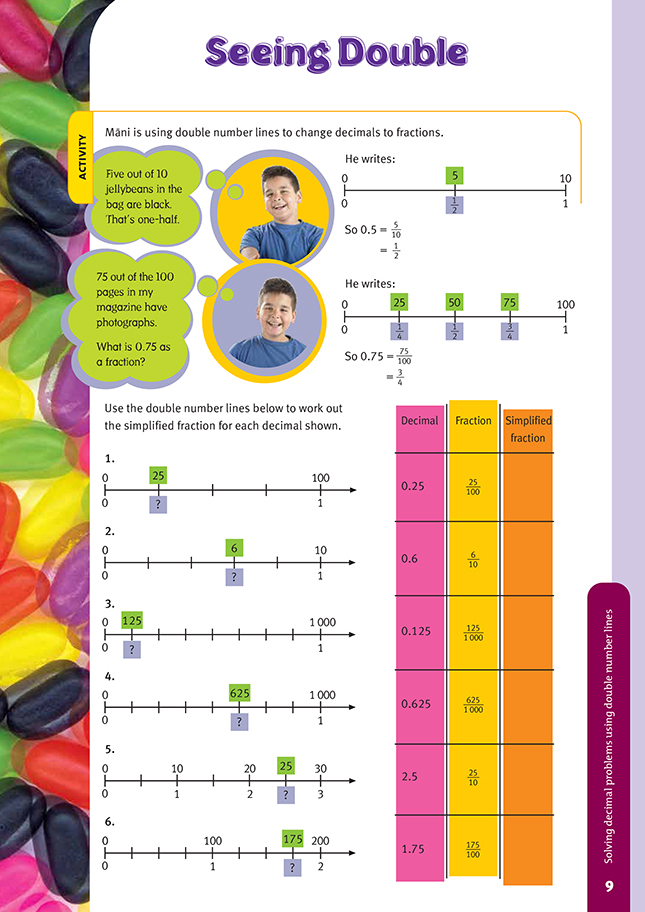This is a level 4 number link activity from the Figure It Out series. It relates to Stage 7 of the Number Framework.
A PDF of the student activity is included.
Click on the image to enlarge it. Click again to close. Download PDF (184 KB)
convert fractions to decimals
FIO, Link, Number, Book Two, Seeing Double, page 9
The double number line is a powerful tool for understanding the equivalence of two related numbers. It’s called “double” because each mark on the line has two sets of numbers matched to it. The top row of numbers describes the whole represented by the line in one way and the bottom row describes the whole in another way. Because the whole line is the same, it’s possible to see the equivalences between the rows of numbers at any point on the line. For example, in question 1, it’s easy to see that 25 out of 100 along the top row is equivalent to 0.25 out of 1 on the bottom row of numbers.
To use a double number line, the students need to know that the starting number (usually 0) for both rows of numbers needs to be at the same point on the line and there needs to be another common point that has two values attached to it. The relationship between these values holds the key to finding other equivalent values.
Question 1 has the second common point at the end of the line where 100 on the top matches 1 on the bottom. Ask the students to use this pair of numbers to explain the relationship along the double number line. Students who are thinking multiplicatively may explain this relationship as “the top number is 100 times greater than the number on the bottom line”. If students say “the top line is 99 more than the bottom
line”, they are thinking additively about the relationship, which is incorrect.
Note the extension in question 5, where the row of numbers does not show the position for 1. Encourage the students who need help with this to find the position for 1 before they work out the required answer.
A copymaster of empty number lines is provided at the back of this booklet so that students can practise other double number line relationships. The students could work in pairs, with one student placing a zero at some point on the top and bottom of the line and then two other numbers somewhere else. The other person must complete both rows of numbers at each point on the line. For example:
Answers to Activity
1. 1/4
2. 3/5
3. 1/8
4. 5/8
5. 5/2 or 21/2
6. 7/4 or 13/4

